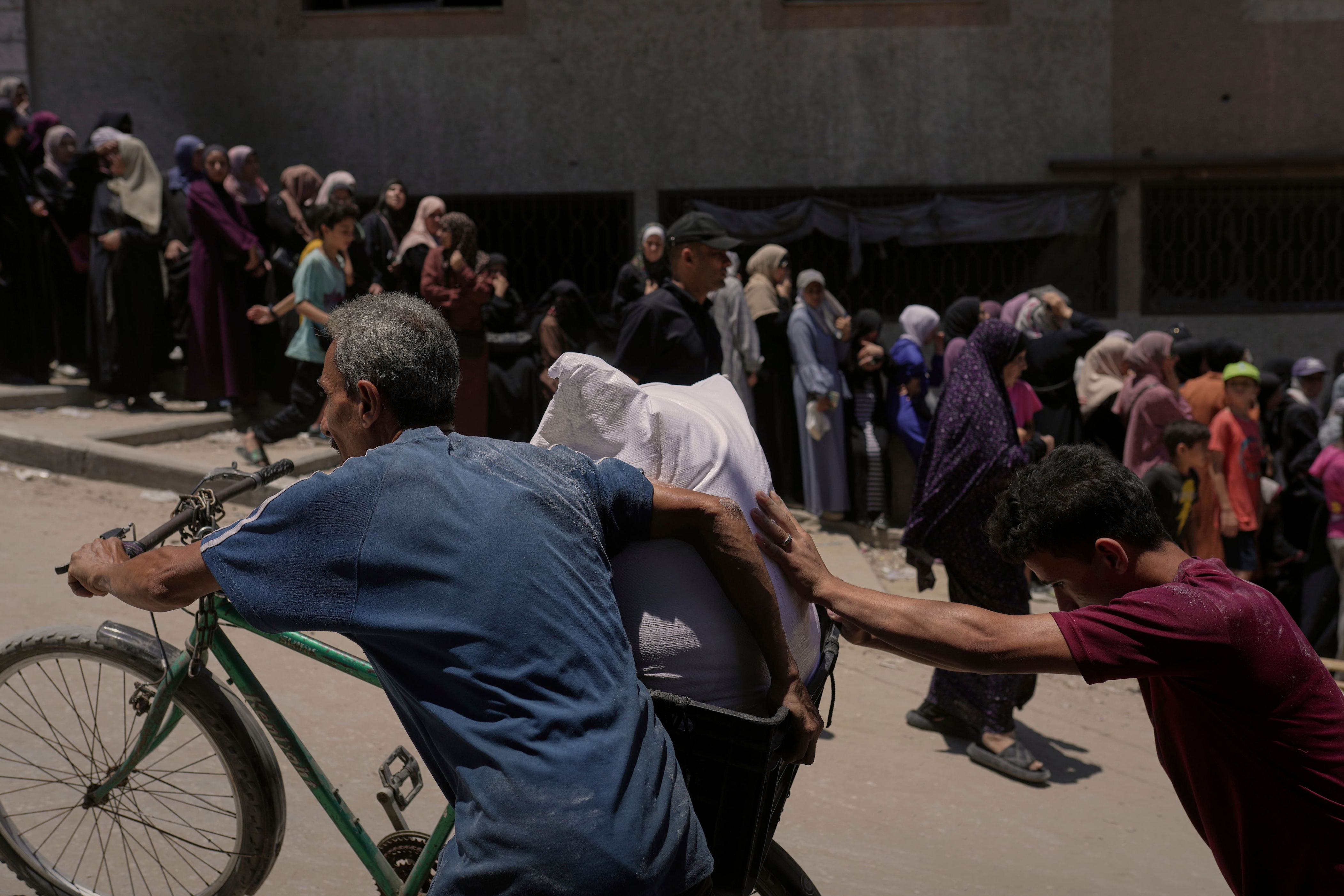59 Palestinians Killed in Gaza by Israeli Airstrikes or Gunfire While Seeking Aid

Escalating Violence in Gaza and the West Bank
At least 31 Palestinians were fatally shot on their way to an aid distribution site in the Gaza Strip on Saturday, while Israeli airstrikes killed at least 28 others, including four children, according to hospital officials and witnesses. The violence has intensified as there are no signs of a breakthrough in ceasefire talks following two days of meetings between U.S. President Donald Trump and Israeli Prime Minister Benjamin Netanyahu. Trump had previously claimed he was close to reaching an agreement between Israel and Hamas that could potentially end the war.
The 31 Palestinians who were shot dead were heading to a distribution site run by the Israeli-backed American organization, the Gaza Humanitarian Foundation (GHF), near Rafah in southern Gaza, as reported by hospital officials and witnesses. The Red Cross noted that its field hospital saw its largest influx of casualties in over a year, with the majority of more than 100 injured suffering gunshot wounds.
Airstrikes in central Gaza’s Deir al-Balah resulted in the deaths of 13 people, including four children, according to Al-Aqsa Martyrs Hospital. Meanwhile, 15 others were killed in Khan Younis, according to Nasser Hospital. Israel’s military did not immediately respond to requests for comment. Intense airstrikes continued in the area of Beit Hanoun in northern Gaza late Saturday evening.
Calls for Ceasefire Grow Amid Rising Tensions
Israeli citizens have once again rallied for a ceasefire deal. Former hostage Eli Sharabi criticized Israeli leaders, stating, “Arrogance is what brought the disaster upon us.” The ongoing conflict has left much of Gaza’s population of over 2 million reliant on outside aid, with food security experts warning of potential famine. Israel blocked and then restricted aid entry after ending the latest ceasefire in March.
“All responsive individuals reported they were attempting to access food distribution sites,” the Red Cross said after the shootings near Rafah, noting the “alarming frequency and scale” of such mass casualty incidents. Israel’s military stated it fired warning shots toward people it claimed were behaving suspiciously to prevent them from approaching. It said it was not aware of any casualties. The GHF denied any incident occurred near its sites.
Abdullah al-Haddad described being 200 meters from the aid distribution site when an Israeli tank started firing at crowds of Palestinians. “We were together, and they shot us at once,” he said, suffering from a leg wound at Nasser Hospital. Another witness, Mohammed Jamal al-Sahloo, said Israel’s military ordered them to proceed to the site when the shooting began.
Sumaya al-Sha’er lost her 17-year-old son, Nasir, in the attack. “He said to me, ‘Mom, you don’t have flour and today I’ll go and bring you flour, even if I die, I’ll go and get it,’” she recalled. “But he never came back home.”
Aid Distribution Challenges and Allegations of Violence
Witnesses, health officials, and U.N. officials claim hundreds have been killed by Israeli fire while heading toward GHF distribution points through military zones off limits to independent media. The military has acknowledged firing warning shots at Palestinians it claims approached its forces in a suspicious manner.
The GHF denies there has been violence in or around its sites. However, two of its contractors told The Associated Press that their colleagues have fired live ammunition and stun grenades as Palestinians scramble for food, allegations the foundation denied.
In a separate effort, the U.N. and aid groups say they struggle to distribute humanitarian aid due to Israeli military restrictions and a breakdown of law and order leading to widespread looting. The first fuel—150,000 liters—entered Gaza this week after 130 days, a joint statement by U.N. aid bodies said, calling it a small amount for the “backbone of survival in Gaza.” Fuel is essential for hospitals, water systems, and transport, the statement added.
Ongoing Conflict and Tragic Losses
Hamas-led militants killed some 1,200 people in their October 7, 2023, attack on Israel, which sparked the war and led to the abduction of 251 hostages. Hamas still holds some 50 hostages, with at least 20 believed to remain alive.
Israel’s retaliatory offensive has killed over 57,800 Palestinians, more than half of whom are women and children, according to Gaza’s Health Ministry. The ministry, under Gaza’s Hamas-run government, does not differentiate between civilians and combatants in its count. The U.N. and other international organizations consider its figures the most reliable statistics on war casualties.
A Tragedy in the West Bank
A Palestinian-American man was killed in the West Bank. Friends and relatives paid their respects after Seifeddin Musalat and his local friend Mohammed al-Shalabi were killed, according to the Palestinian Health Ministry. Musalat was beaten to death by Israeli settlers on his family’s land, his cousin Diana Halum told reporters. The settlers then blocked paramedics from reaching him.
Musalat, born in Florida, was visiting his family home. His family wants the U.S. State Department to investigate his death and hold the settlers accountable. The State Department said it was aware of the reports but had no comment out of respect for the family.
A witness, speaking on condition of anonymity, said the settlers descended on Palestinian lands and “started shooting at us, beating by sticks and throwing rocks.” Israel’s military has stated that Palestinians hurled rocks at Israelis in the area earlier on Friday, lightly wounding two people and triggering a larger confrontation.
Palestinians and rights groups have long accused the military of ignoring settler violence, which has increased—along with Palestinian attacks and Israeli military raids—since the war in Gaza began.
Komentar
Posting Komentar